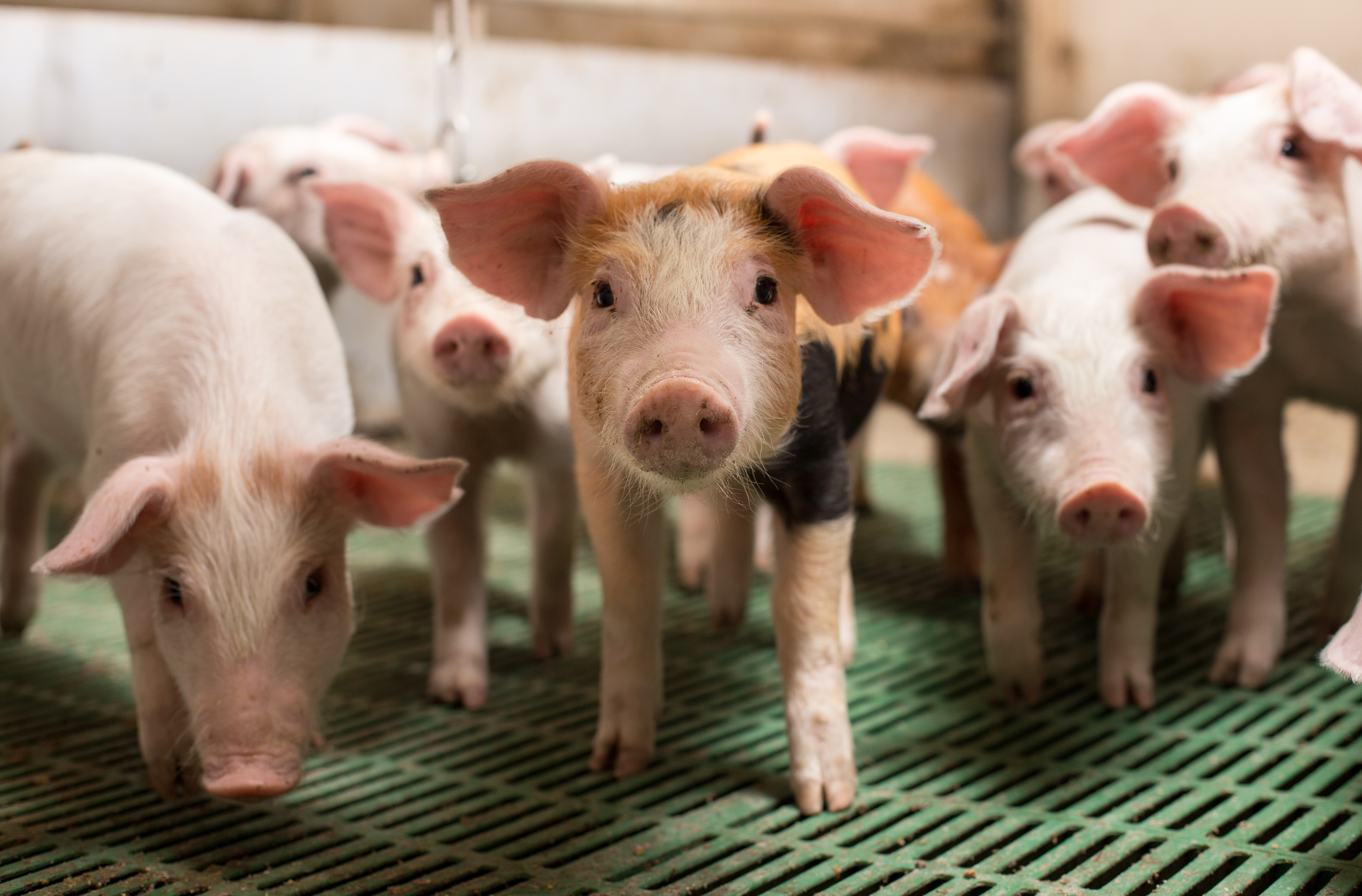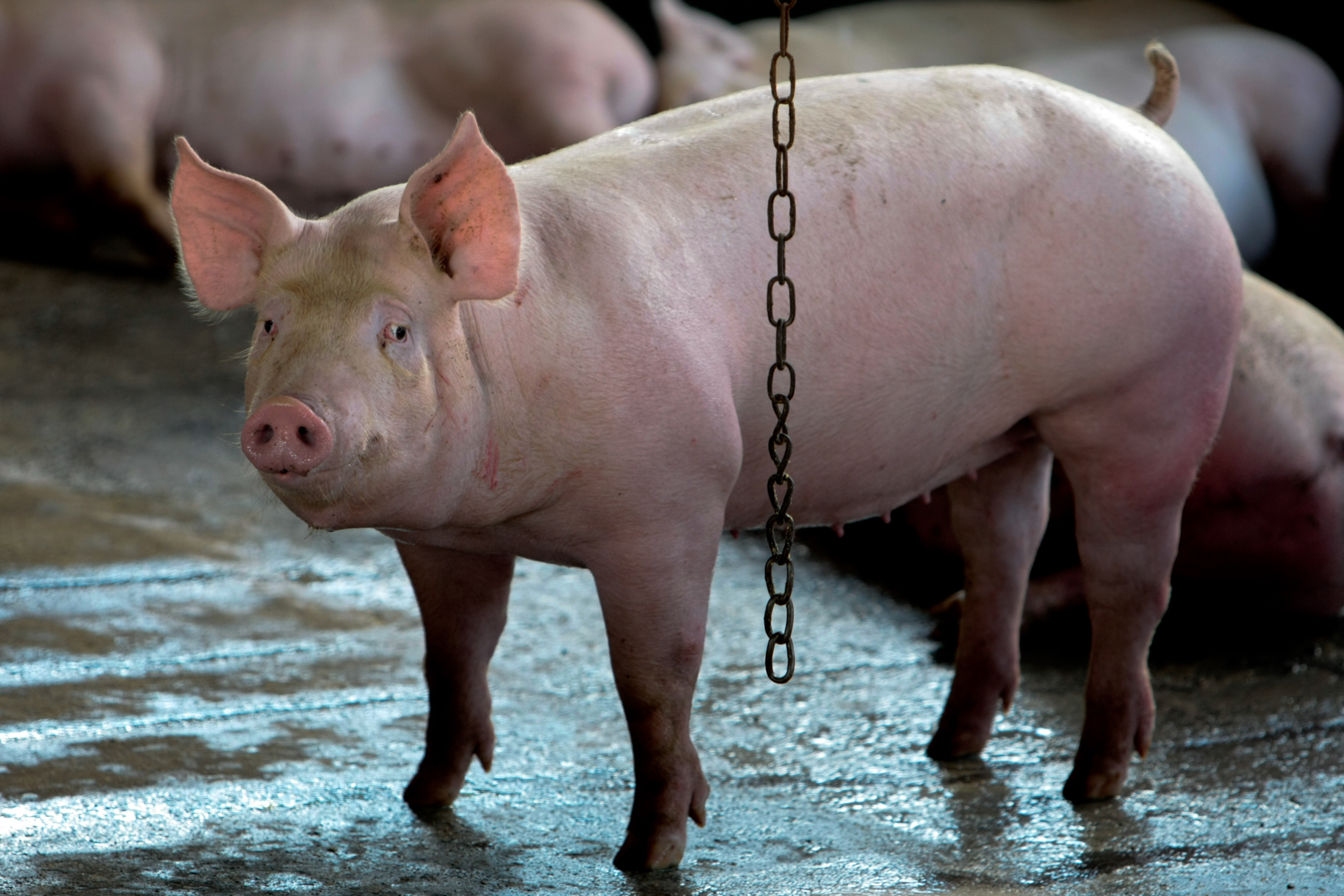



It is possible to keep pigs with intact tails in fully-slatted systems
Appropriate enrichment is essential for healthy, productive pigs but the type of enrichment used in in different systems is crucial to its success as an alleviator of damaging behaviours such as tail biting.Providing appropriate enrichment that satisfies the innate exploratory and chewing behaviour in pigs has proven to be crucial in reducing the instances of damaging, boredom-based behaviours such as tail, ear and flank biting. This said, the type of enrichment that is viable for each herd is currently largely dependent on the type of housing and slurry removal system. Straw-based enrichment, for example, can clog up some slurry removal systems in fully slatted housing. Equally, the number of interactive enrichment elements in a pen must satisfy the long-term exploratory needs of every of pig in that pen.
Jen-Yun Chou, a PhD student with Scotland’s Rural College (SRUC), The University of Edinburgh and Teagasc (Ireland), is investigating damaging behaviours in group-housed farm animals, with particular focus on determining appropriate enrichment to prevent tail biting in pigs. In 2018, Chou published her study on the use of different types of wood as enrichment in fully-slatted systems, the results of which indicated that the softer spruce wood was without doubt the preferred chewing choice of the majority of pigs in the trial.
We discuss with Jen-Yun the major factors influencing tail biting in pigs and explore the findings from her research so far.

Your recent research has focused on mitigating tail biting behaviour in both docked and un-docked pigs in slatted systems. Did you observe a significant difference in the number of tail-biting cases between docked and un-docked pigs?
Yes, I think that a lot of the literature, as well as my own experiences, has shown that docking tails was quite effective in reducing tail biting. I ran two experiments with docked pigs, and two with un-docked pigs, and we didn’t observe much tail biting in the docked pigs at all. In the un-docked pigs, however, we have to constantly manage tail-biting outbreaks. There are also more serious outbreaks of tail biting, with higher levels of damage – infection and amputation – observed in un-docked pigs. If we see a certain percentage of pigs with fresh blood on their tails, we call it a tail-biting outbreak and we have a certain protocol that we have to apply to stop it.
Have you investigated other environmental influences on tail biting?
During the course of my PhD, we identified dietary fibre as a secondary factor to investigate. We aimed to test whether high fibre in the pig diet can help to reduce incidences of tail-biting behaviour. I think the rationale behind applying a high-fibre diet is that studies investigating in-feed fibre have previously been run with sows. Sows are usually on restricted feed so they’re constantly hungry, therefore applying a high-fibre diet reduces that hunger. The rationale is also that high-fibre could encourage sows to be less active.
Until now, I don’t think anyone has investigated the impacts of dietary fibre on the incidence of tail biting so in my project, we trialled low- and high-fibre diets to see how this worked in docked and un-docked pigs. We simultaneously investigated the impacts of one enrichment item (one per 14 pigs). Our results showed that with this one very simple enrichment plus the high-fibre diet, tail biting didn’t stop. We also observed more tail biting in the high-fibre diet group.
We’re speculating that the higher incidence of tail biting is because high-fibre is making their faeces quite soft. This means their hindquarters are dirtier which will attract the attention of other pigs. I think another factor at play is that with finishing pigs, they’re always on unlimited feed, therefore the extent to which the fibre can help is limited.
From what your research has shown you, what are the top factors that influence tail biting?
I would say that at least in our line of inquiries, it’s still primarily the ability to take part in foraging activities. Pigs have this constant need to forage and to root, and unfortunately in most commercial environments, that’s not provided. Though they have constant access to high-concentrated feed and can feel full, they have that innate need to manipulate materials in their environment.
I think that competition for food, the disease status of the pig and the genetics of the pig are also important factors to consider when dealing with tail biting.
I certainly believe that enrichment alleviates some of these other problems: it can definitely help to satisfy foraging needs and could potentially reduce competition at feeders, if pigs are distracted by nice, manipulable materials. Depending on what kind of enrichment you’re using, it can also provide thermal comfort to pigs and regulate the climate in the pen.
Meanwhile, other researchers have mentioned drafts, ventilation and air quality as significant factors. Some of my colleagues are looking at the impact of ammonia levels in slatted systems on the incidence of tail biting. With the slatted system, the slurry is below the pigs at all times so if you don’t clean out the slurry often enough, the ammonia level will build up, and that’s apparently a huge risk factor for tail biting.
How would you define enrichment?
In my definition, enrichment definitely has to satisfy the biologically relevant needs of the animal. It should also promote the positive wellbeing of the animal.
However, I think in terms of figuring out a solution for tail biting, appropriate enrichment items should also maintain engagement from pigs over long periods of time, not just when you first introduce it and they like the novelty of it. Within my studies, we always want to look for the effect of time – you don’t want to see a rapid decline in interaction shortly after introduction to the enrichment.

What items have you trialled as enrichment in your research?
The main material I used at the start of my project was wood. Initially we just wanted to compare the properties of different wood species and their suitability as enrichment materials. Certainly, there’s huge variety in wood properties, including moisture content, toughness, scent and flavour, and this translated into the results from that research.
We found that the pigs preferred to interact with softer woods; those that they can destroy and ingest, such as spruce.
We then wanted to trial a more complex enrichment strategy so we filled an elevated rack with locally-sourced fresh-cut grass – of which there is plenty in Ireland where my research was based. The pigs loved the grass. We tried a few different loose materials in the elevated racks but what was great about the grass was that it has more weight to it, so it stayed in the rack until the pigs pulled at it and ate it.
Some researchers in Germany also trialled grass silage in pig pens and they found that it helped to mitigate the risk of pigs developing gastric ulcers. I think it’s important to look for materials that are available locally.
We have tried to place enrichment in different positions on the perimeter of the pen and we also used a floor toy. It’s also important that all of the floor enrichment can move – this is good for pigs because it can generate interactions with others. It’s more suited to their sociable nature.
We’ve trialled many different substrates throughout the project, including potato sacks and sometimes soft rubber to make the materials more durable. I believe that if you give pigs a mix of different enrichment items, the enrichment is more successful in keeping them occupied over time and reduces competition.
What is a take-home message you’d like people to get from your research?
Well, firstly I’d like to say that it’s possible to keep pigs with intact tails in slatted systems – even in fully slatted systems – but there are steps that need to be taken. You need to provide them with adequate materials to manipulate. Just stopping docking without implementing any enrichment would be very risky, and there would likely be numerous tail-biting outbreaks which would make the change nonviable.
It’s really important to make changes on farm step-by-step. Producing a risk assessment of all the possible causes of tail biting on your farm will be valuable – it might be your ventilation, or it might be your stocking density, for example.
You need a tail-biting contingency plan and once you start implementing that, you’ll learn how to deal with future incidents. I think that’s the most important thing to learn when working with groups of un-docked pigs: you’ll start panicking when they start tail biting, but you learn how to predict this behaviour, see the signs and intervene before an outbreak forms.
I don’t know if it’s also because of all the enrichment I gave my pigs, but they always seem to do well, they don’t have many health issues which I’m hoping that gradually the other farmers will see in their own herds.
Not docking pigs can be stressful but it’s important to view this transition as something that can help you better manage your herd and something that will improve your herd performance in the long-term.
| References | ||||
|---|---|---|---|---|
| Jen-YunChou, Rick B. D'Eath, Dale A. Sandercock, Natalie Waran, Amy Haigh, Keelin O'Driscoll | ||||
| (2018) | Use of different wood types as environmental enrichment to manage tail biting in docked pigs in a commercial fully-slatted system. Livestock Science | 213:19-27 |









